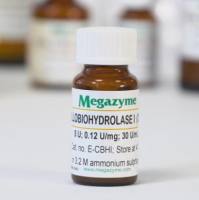Internal Standards for 2-D
互联网
1232
Internal standards are extremely valuable for determining the pH and mol-wt ranges of a specific 2-D gel system and for constructing calibration curves for calculating the relative pI and M r of unknown proteins. Although external markers are often used for initially calibrating a 2-D gel, eventually the predicted isoelectric points and molecular weights of identified proteins function as calibration markers. For the beginner, several commercial kits are available containing preformulated mixtures of proteins that can be run on 2-D gels either in parallel or mixed with experimental samples as standards. For carrier ampholyte IEF gels, the pH profile can be directly determined by measuring the pH throughout the gel using a standard pH meter. For both CA and IPG IEF gels, a train of differentially carbamylated proteins producing a uniform series of spots on the 2-D gel provides an internal standard for both evaluating the performance of the isoelectric focusing gel and comparing the 2-D spots positions on different gels. However, the exact pI of each spot in the “carbamylated train” is unknown. For calibrating the SDS-PAGE gel, a mixture of protein standards of known molecular weight is simply loaded onto the SDS-PAGE gel flanking both sides of the IEF gel. However, it is important to load the mol-wt standards in the same manner as the IEF gel to minimize any differences in the relative mobilities of the standards and experimental proteins.


![N-(3-Chlorophenyl)-N'-[5-[2-(thieno[3,2-d]pyrimidin-4-ylamino)ethyl]-2-thiazolyl]urea](https://img1.dxycdn.com/p/s14/2025/1010/765/0865776312945446791.jpg!wh200)


![4-Chloro-7-Methylthieno[3,2-D]Pyrimidine](https://img1.dxycdn.com/2022/0314/391/1356392906646747353-14.jpg!wh200)
![2,4-Dichloro-7-methylthieno[3,2-d]pyrimidine](https://img1.dxycdn.com/2020/0518/736/3414053749697279748-14.jpg!wh200)


